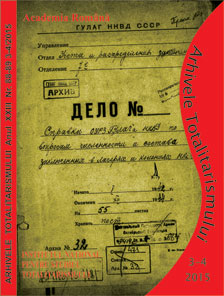Mortality rates of GULAG timber camps during 1937-1938 crisis in comparative international context
Mortality rates of GULAG timber camps during 1937-1938 crisis in comparative international context
Author(s): MIKHAIL NAKONECHNIYSubject(s): History, Economic history, Local History / Microhistory, Political history, Recent History (1900 till today)
Published by: Institutul National pentru Studiul Totalitarismului
Keywords: GULAG; prisoner mortality; timber camps, Nazi concentration camps;
Summary/Abstract: This paper is an analytic attempt to examine mortality of prisoners in the Gulag timber camps on micro-level during Great Terror of 1937-1938. The author uses comparative methodology for his analysis. For comparison, he employs statistical data of the U.S.A. prison system, metropolitan prisons of the Third French Republic, concentration camps of Nazi Germany, as well as death-rates of comparable gender and age cohorts of the USSR’s civil population. Detailed monthly absolute and relative mortality rates for all newly created timber camps are introduced in this paper for the first time in historiography, including relative death rates of Lokchimlag, Tomasinlag, Ivdellag, Ust-Vymlag camps and several others ITLs during the global crisis of 1937- 1938
Journal: Arhivele Totalitarismului
- Issue Year: XXIII/2015
- Issue No: 3-4
- Page Range: 24-44
- Page Count: 21
- Language: English
- Content File-PDF

